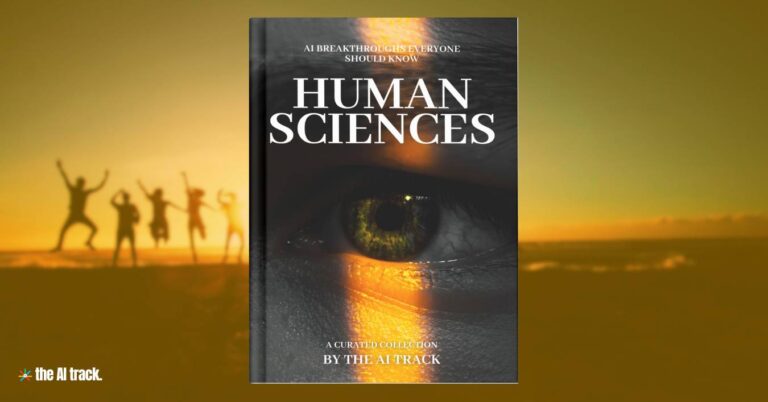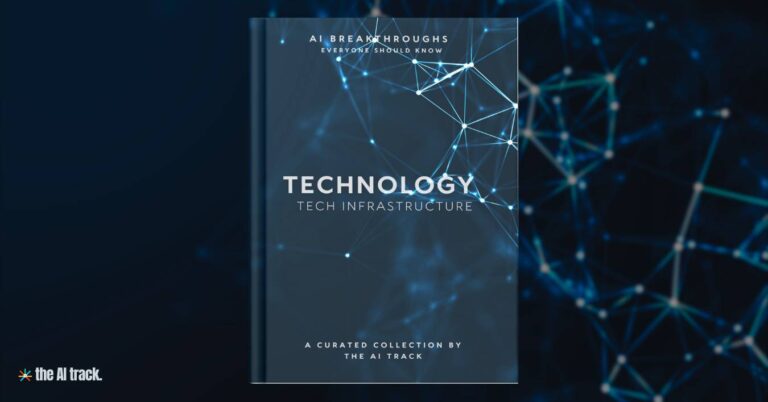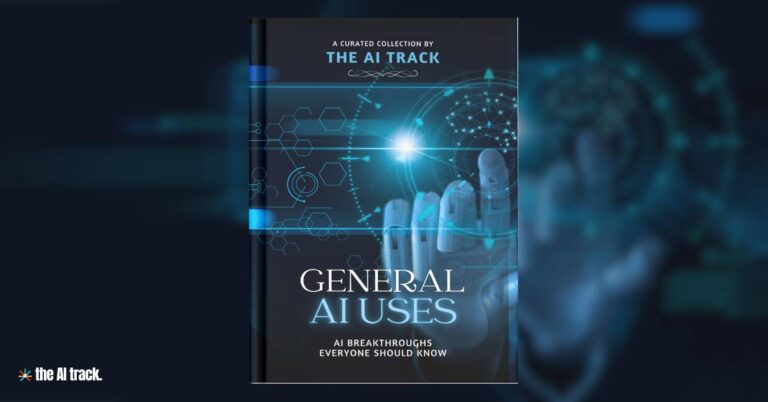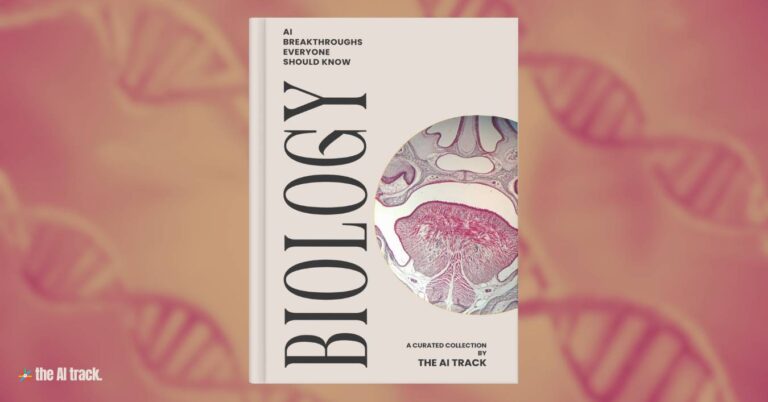AI Breakthroughs in Agriculture - At a Glance

AI is revolutionizing agriculture by optimizing resource use, enhancing productivity, and driving innovation. This section showcases the key AI breakthroughs in agriculture that are reshaping modern farming practices and agricultural industries.
Each section offers insights into how AI is transforming different sectors, providing a comprehensive view of its impact across a wide range of disciplines.
The Impact of Artificial Intelligence on the Environment: A Tale of Eco-Innovation and Resource Consumption
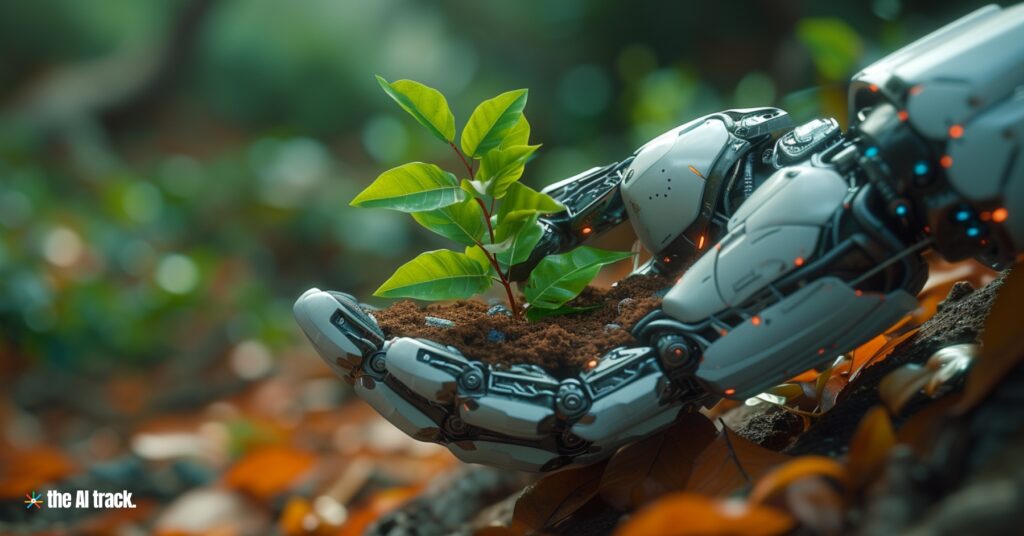
Investigating the transformative effects of artificial intelligence in addressing climate change and environmental sustainability, this article covers AI’s applications in reducing emissions, enhancing agricultural efficiency, and bolstering conservation initiatives, alongside discussing its own environmental footprint.
AI (through apps like Shepherd’s Grain and ClimateAi) is transforming agriculture with precise weather forecasts and crop management.
Original Article Title:
‘We are creating new crops five-times faster’
Source: BBC
Date: 13 June 2024
AI is becoming a crucial tool in agriculture to combat climate change. Companies like Shepherd’s Grain and ClimateAi use AI for precise weather forecasting and crop management. Projects like Artemis, funded by the Bill and Melinda Gates Foundation, use AI to develop climate-resilient crops faster. Meanwhile, Avalo leverages AI for genetic analysis to produce quicker-growing, more resilient crops. However, challenges like data quality and technology accessibility remain.
AI tool could use photographs to predict harvests, researchers say
Original Article Title:
AI tool could use photographs to predict harvests, researchers say
Source: The Independent
Date: 18 June 2024

Key Takeaway: A new AI system developed by researchers at the National Robotarium in Edinburgh can accurately predict fruit harvests by counting flowers on trees using standard smartphone photos. This technology aims to enhance crop yield predictions and reduce waste.
Key Points:
- The AI system counts flowers on fruit trees, predicting yields up to six months in advance.
- It achieved 90% accuracy in trials, significantly higher than manual counts.
- The tool helps farmers optimize resources, reduce waste, and improve harvest planning.
- Future adaptations may benefit other crops like apples, pears, and cherries.
Why This Matters: This AI technology can revolutionize farming by improving resource management and sustainability, potentially reducing global food waste and enhancing agricultural productivity.
Indonesian fishermen are using a government AI tool to find their daily catch
Original Article Title:
Indonesian fishermen are using a government AI tool to find their daily catch
Source: Rest of World
Date: 9 August 2024

Key Takeaway:
Indonesia’s National Research and Innovation Agency (BRIN) is leading the country’s efforts in applying artificial intelligence (AI) to address various challenges, from boosting the fishing industry to combating illegal activities, while also navigating concerns over data security and AI adoption.
Key Points:
- BRIN’s Role: BRIN, established in 2019, is spearheading the implementation of AI across Indonesia, focusing on five priority areas: education, healthcare, food security, environmental monitoring, and sustainable mining.
- NN Marlin App:
- Fisheries Impact: Fisheries contribute nearly 3% to Indonesia’s GDP.
- Usage: The NN Marlin app is used by hundreds of fishermen across Indonesia, helping them locate fish with greater accuracy and efficiency.
- Cost: Fishermen pay 1.2 million rupiah (approximately $73) for a tablet with an internet subscription to access the app. BRIN provides up to six updates daily on potential fishing zones.
- AI in Law Enforcement:
- Illegal Fishing: Indonesia loses at least $3 billion annually due to illegal fishing activities. The NN Marlin app also helps authorities detect illegal fishing and monitor foreign vessels.
- Marijuana Detection: BRIN’s AI tools help law enforcement locate illegal marijuana fields using remote sensing technology, improving the certainty of police operations.
- Big Tech Investments:
- Nvidia and PT Indosat: Announced a $200 million investment in an AI center in Central Java.
- Microsoft: Pledged $1.7 billion for AI and cloud infrastructure, along with training for 840,000 Indonesians.
- Google Cloud: Involved in developing generative AI solutions for healthcare in Indonesia.
- Data Security Concerns:
- Ransomware Attack: A major ransomware attack in June 2024 affected more than 160 government agencies, disrupting services like immigration and airport operations. This incident highlights the risks associated with the vast amounts of data collected for AI training.
- Legislation: The implementation of Indonesia’s Personal Data Protection Law is crucial to safeguard data security as AI adoption increases.
- Economic Impact:
- GDP Contribution: AI could contribute nearly $1 trillion to Southeast Asia’s GDP by 2030, potentially boosting Indonesia’s GDP by about 12%.
- Long-Term Vision: Indonesia aims to leverage AI to become a high-income economy by 2045, promoting more inclusive and sustainable economic growth.
Why This Matters:
Indonesia’s proactive approach to AI, led by BRIN, demonstrates the country’s commitment to harnessing technology to solve real-world problems, from boosting the fishing industry to enhancing law enforcement capabilities. However, as AI adoption accelerates, ensuring data security and addressing economic disparities will be crucial for sustainable development.
AI-Powered VespAI Helps Detect Invasive Asian Hornets with Near-Perfect Accuracy
Original Article Title:
AI helps to detect invasive Asian hornets
Source: University of Exeter
Date: 3 April 2024
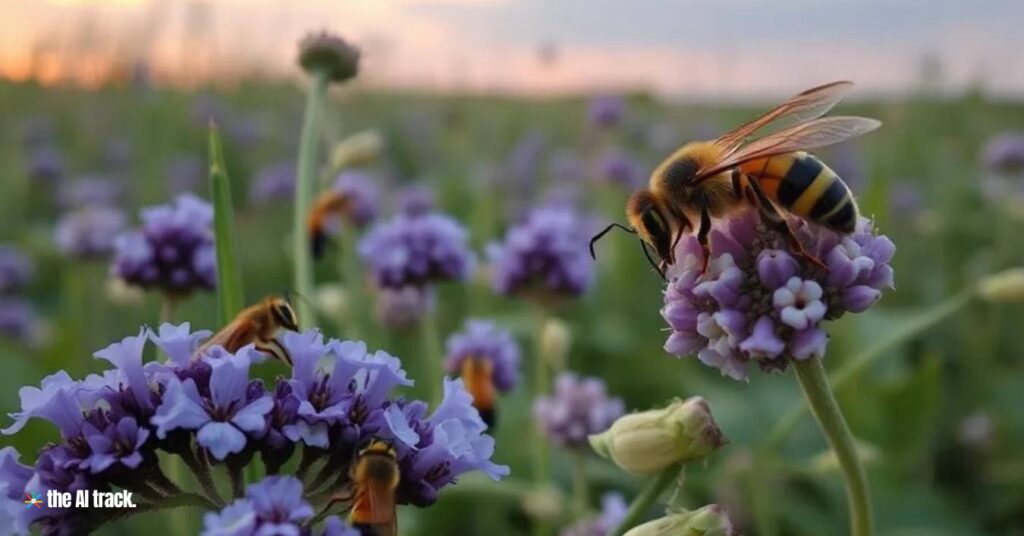
Key Takeaway:
Researchers from the University of Exeter have developed “VespAI,” an artificial intelligence-based system that accurately detects and monitors invasive Asian hornets (Vespa velutina), helping authorities and beekeepers combat their spread. The system is nearly 100% accurate in distinguishing between Asian hornets and other insects, providing a non-invasive solution to track and address this environmental threat.
Key Points:
- Hornet Invasion Problem: The U.K. has been battling invasive Asian hornets, which first appeared in Europe via France in 2004. These hornets pose a serious threat to honeybees, which are essential for pollination and plant life in the region.
- Traditional Methods: Current strategies rely heavily on civilians reporting sightings of Asian hornets, but this leads to many false identifications, making it inefficient for tracking the real threat.
- VespAI System: The AI-powered system attracts hornets and captures images, only activating when it detects an insect of the right size. VespAI then sends the images to researchers for confirmation.
- The system does not harm non-target species, reducing the ecological impact compared to traditional traps.
- The AI exhibited “almost perfect accuracy” in identifying Asian hornets.
- Environmental and Operational Benefits: Unlike other methods that trap and kill various insect species, VespAI focuses on the Asian hornets without harming other insects. Once hornets are detected, they can be tracked back to their nests for destruction, the only effective way to combat the hornet populations.
- Testing Success: VespAI has been extensively tested on the island of Jersey, which sees frequent incursions of Asian hornets due to its proximity to France. The system performed exceptionally well, accurately distinguishing between European hornets, Asian hornets, and other insects, even in large numbers.
- Collaborative Efforts: The project involved collaboration with key organizations such as Defra, the National Bee Unit, the British Beekeepers Association, and Vita Bee Health. The research was funded by the Biotechnology and Biological Sciences Research Council (BBSRC).
Why This Matters:
The development of VespAI offers a highly accurate and environmentally friendly solution to the growing issue of Asian hornet invasions, which threaten both local ecosystems and honeybee populations. By allowing precise tracking and identification, the system aids in more effective pest control measures, potentially preventing significant agricultural and ecological damage. Its deployment could play a crucial role in managing and mitigating future invasive species threats in the U.K. and other affected regions.
Explore our AI Books hub for detailed summaries of the most influential AI books. Discover key insights, actionable takeaways, and viral quotes.
From Smart Milking to Precision Spraying: AI in Action on Farms
Original Article Title:
How AI is allowing cows to send messages to farmers when they’re giving birth
Source: ABC News
Date: 12 October 2024
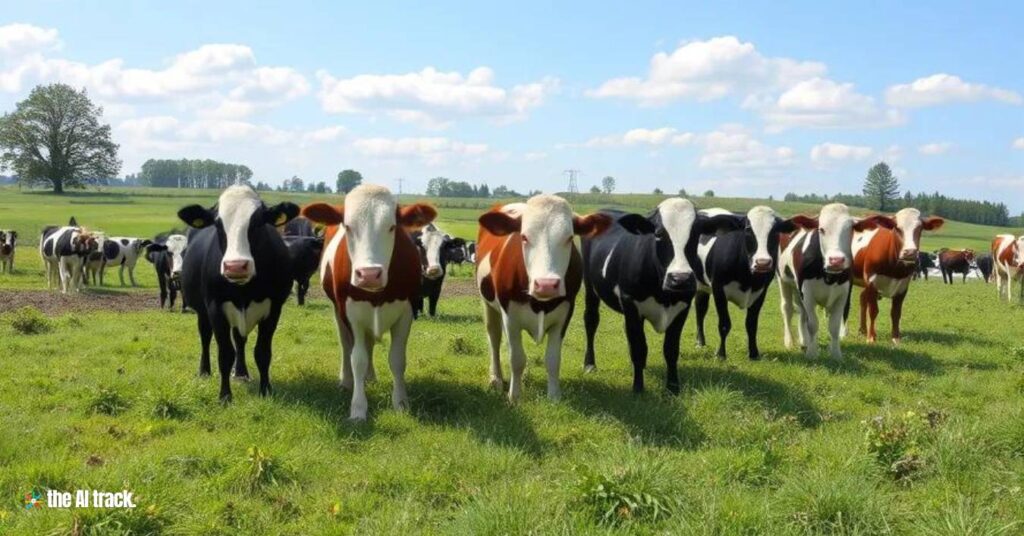
Key Takeaway:
AI is revolutionizing agriculture by improving efficiency, enhancing animal welfare, and optimizing resource use through smart technologies like robotic milking machines and precision spraying systems.
Key Points:
- AI in Livestock Management: AI-powered sensors detect illnesses in animals and alert farmers when cows are about to calve, improving animal health and productivity.
- Precision Farming: AI helps reduce up to 96% chemical use in crops by selectively targeting weeds using advanced imagery and spray technology.
- Water Optimization: AI-based systems like WaterWise assist farmers in making precise irrigation decisions, improving water efficiency.
Why This Matters:
AI is transforming agriculture by reducing waste, improving crop and livestock management, and contributing to sustainable farming practices.
Blue River Technology aims to transform traditional farming methods through precision agriculture
Original Article Title:
Blue River Technology: Futuristic Approach of Precision Farming
Source: ResearchGate
Date: April 2022
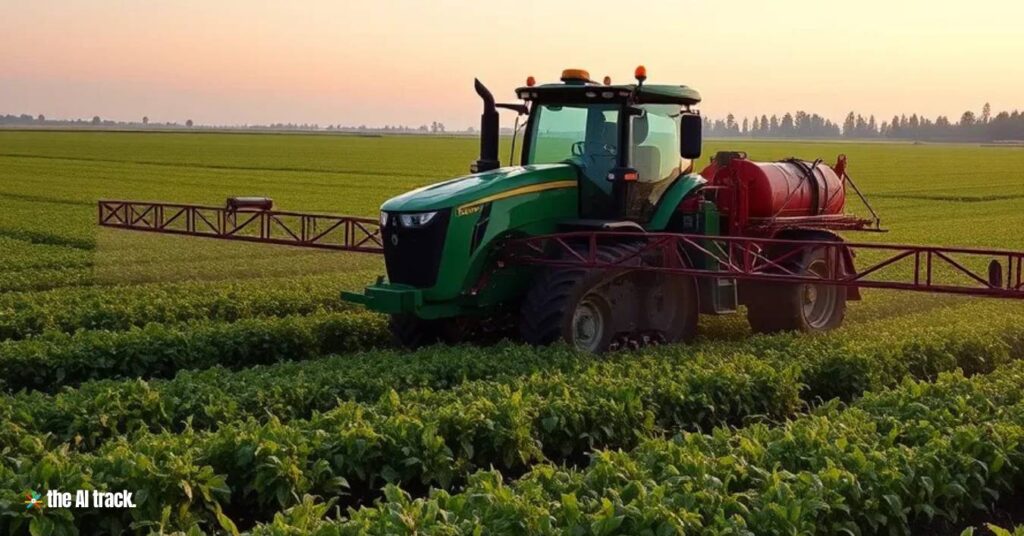
Summary:
Blue River Technology is a pioneering company in precision agriculture that uses advanced AI, machine learning, and robotics to revolutionize farming practices. Founded in 2011 and later acquired by John Deere, Blue River Technology focuses on developing sustainable farming solutions that optimize crop production while minimizing the use of chemicals and resources.
Key Points:
- Introduction to Blue River Technology: Blue River Technology aims to transform traditional farming methods through precision agriculture. The company develops smart machines that leverage computer vision, AI, and machine learning to make real-time decisions in the field. Their flagship technology, See & Spray, targets weeds with pinpoint accuracy, reducing herbicide usage and improving crop yield efficiency.
- See & Spray Technology: The See & Spray system uses high-resolution cameras and AI algorithms to identify weeds among crops in real time. Unlike conventional sprayers that blanket entire fields with chemicals, See & Spray targets only the weeds, significantly reducing herbicide application by up to 90%. This precision not only saves costs but also promotes environmental sustainability by lowering chemical runoff and soil contamination.
- Advantages of Precision Agriculture: Blue River Technology’s approach addresses key challenges in modern farming, including labor shortages, rising input costs, and the environmental impact of traditional agricultural practices. Precision agriculture enhances decision-making on the farm, allowing farmers to apply resources like water, fertilizers, and pesticides more effectively. This targeted approach leads to healthier crops, better yields, and reduced environmental footprints.
- Machine Learning and AI Integration: The core of Blue River Technology’s success lies in integrating machine learning and AI into agricultural machinery. The See & Spray system continuously learns from field data, improving its weed identification accuracy over time. AI models are trained to distinguish between crops and various weed species, allowing for more nuanced and effective weed control. This technology exemplifies how AI can enhance agricultural productivity through intelligent automation.
- Environmental and Economic Impact: Blue River Technology’s innovations align with the global push for sustainable farming. By reducing the use of harmful chemicals, their technology not only supports environmental conservation but also reduces operational costs for farmers. This balance of economic and ecological benefits positions Blue River Technology as a leader in the movement towards greener agriculture.
- Future of Farming with Robotics and AI: Blue River Technology’s advancements are just the beginning of a broader shift towards AI-driven farming. The company envisions a future where farms operate with minimal human intervention, using autonomous machines that can plant, weed, and harvest with unparalleled precision. This futuristic approach holds the potential to address global food security challenges while preserving natural resources.
Why It Matters: Blue River Technology’s precision farming tools demonstrate how AI and robotics can revolutionize agriculture, making it more sustainable and efficient. As the world faces growing demands for food production amidst environmental constraints, innovations like See & Spray provide a roadmap for the future of farming.
Decoding the Oink: AI Helps Farmers Understand Pig Emotions
Original Article Title:
Scientists say they can use AI to understand what pigs are saying
Source: Sky News
Date: 24 October 2024
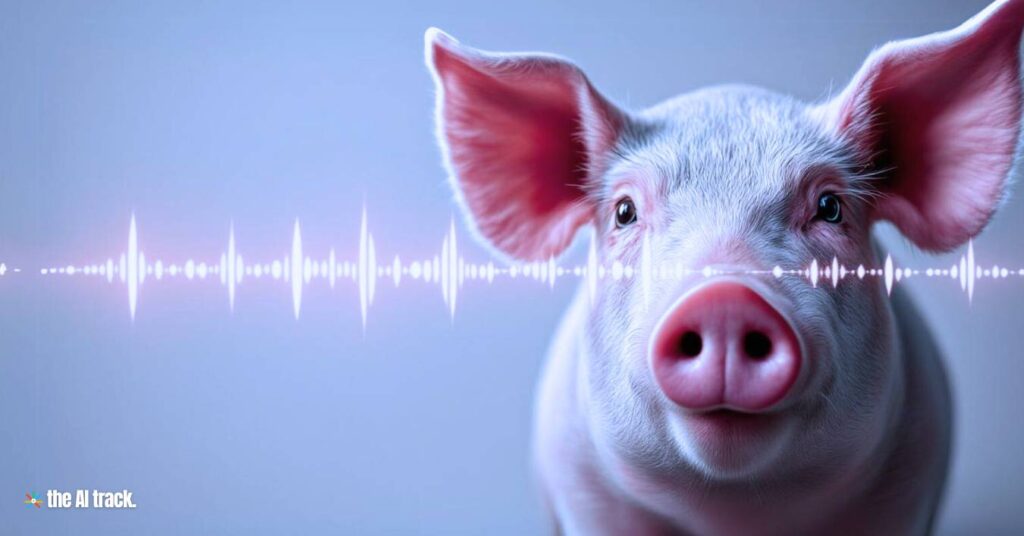
Key Takeaway:
European scientists have developed an AI algorithm capable of interpreting pig sounds, distinguishing between positive and negative emotions. The tool, which could soon be used by farmers via mobile apps, aims to enhance animal welfare by providing real-time insights into the emotional state of pigs, allowing farmers to make better decisions for their well-being.
Key Points:
AI-Based Pig Communication:
Researchers from universities in Denmark, Germany, Switzerland, France, Norway, and the Czech Republic recorded and analyzed thousands of pig sounds in different contexts, such as play, isolation, and competition for food. The AI algorithm was trained to identify patterns in the sounds and differentiate between positive emotions (e.g., short grunts) and negative emotions (e.g., long grunts or squeals).
Impact on Animal Welfare:
The AI tool has the potential to revolutionize how farmers monitor and respond to the emotional well-being of pigs. By detecting distress or discomfort through sound analysis, farmers can intervene earlier, ensuring that animals are kept in more favorable conditions, leading to healthier and more content livestock.
Outdoor vs. Indoor Conditions:
The study found that pigs raised in outdoor, free-range environments showed fewer signs of stress compared to those raised in traditional, confined settings. Outdoor pigs, which have the ability to roam and dig, produced fewer distress calls, suggesting that more natural environments contribute to their well-being.
Future Applications:
The researchers envision a future where farmers use an app to receive real-time emotional feedback from their pigs, helping to optimize farm management. This technology could also be used to label farms based on the welfare of the animals, giving consumers more transparency when making food choices.
Significance for Farming and Research:
By using AI to interpret animal emotions, this research could lead to a better understanding of how to improve the living conditions of livestock, aligning with growing consumer demand for ethically raised animals. The development also highlights the increasing role of AI in improving sustainability and welfare in agriculture.
Why This Matters:
Understanding animal emotions is crucial for improving welfare in farming environments. This AI technology could set a new standard for how farms monitor the well-being of their animals, promoting more humane practices and potentially reshaping consumer preferences in the future.
Sustainable Farming, Powered by AI and Precision Lasers
Original Article Title:
Future of farming? Carbon Robotics raises $70M for AI robots that blast weeds with lasers
Source: GeekWire
Date: 21 October 2024
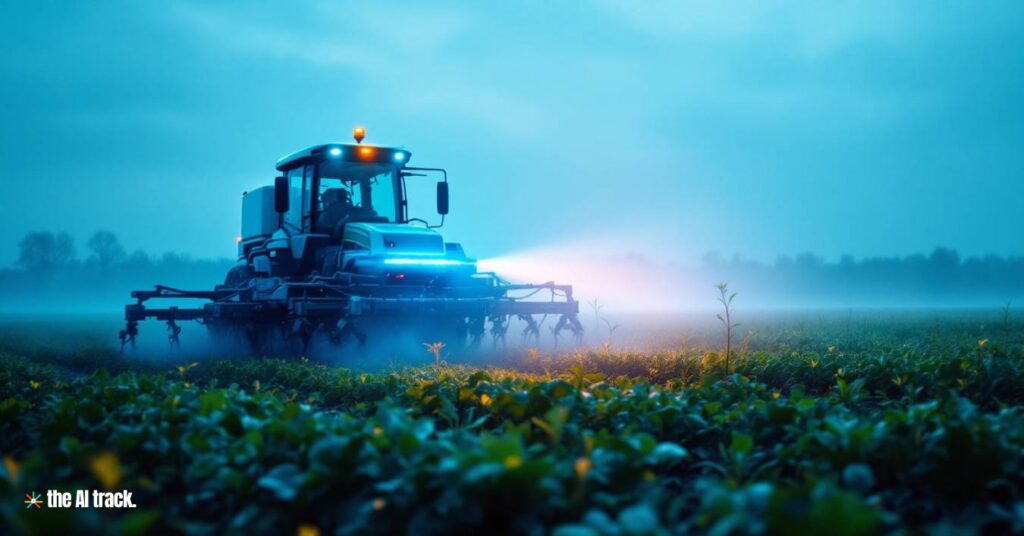
Key Takeaway:
Carbon Robotics raised $70M to scale its LaserWeeder, an AI-powered machine that eliminates weeds using lasers, without the need for herbicides. This approach helps farmers tackle herbicide-resistant weeds while also addressing labor shortages.
Key Points:
- Funding: Led by BOND, the Series D round raised $70M, bringing total funding to $157M since 2018.
- Technology: The LaserWeeder uses 24 Nvidia GPUs to process 4.7M images per hour, precisely targeting weeds without disturbing soil microbiology.
- CEO Insight: Founder Paul Mikesell highlighted AI’s transformative potential beyond traditional tech, focusing on practical applications in farming.
- Market Growth: Carbon Robotics’ revenue doubled in the past 12 months. The startup plans to expand globally, including into Asia.
- Business Model: Contrary to common robotics-as-a-service models, Carbon Robotics sells its machines outright, with added software services.
Why This Matters:
AI-powered robots like LaserWeeder provide sustainable farming solutions, reducing harmful herbicides and labor shortages, while enabling precision agriculture. This positions Carbon Robotics as a leader in agricultural tech, particularly as venture capital in the sector has declined by 60%.


